This model is reconstructed with ample attention to detail for this alien-looking wonder from the Cambrian.
I’ve had a soft spot for the weirdos in nature since my early childhood, so Opabinia has always been a favorite of mine. This 3 inch long stem arthropod was a denizen of the ocean floors during the middle of the Cambrian Period, about 505 million years ago. The Cambrian was a ripe breeding time for new and unusual animal life, to the point that Opabinia would have appeared pretty normal amongst its contemporaries like Anomalocaris, Wiwaxia, and the iconic trilobite family. Of course, to our mundane mammalian sensibilities, this finned, five-eyed, pincer-trunked caterpillar creature probably looks like it was concocted for a science fiction program – which is all the more reason to love it. Sadly, not much merchandise exists of this extra-ancient prehistoric alien, but at least Favorite Co. Ltd., a Japanese-based company, was kind enough to produce a standard-sized figure for their Prehistoric Life Soft Model series in 2015.
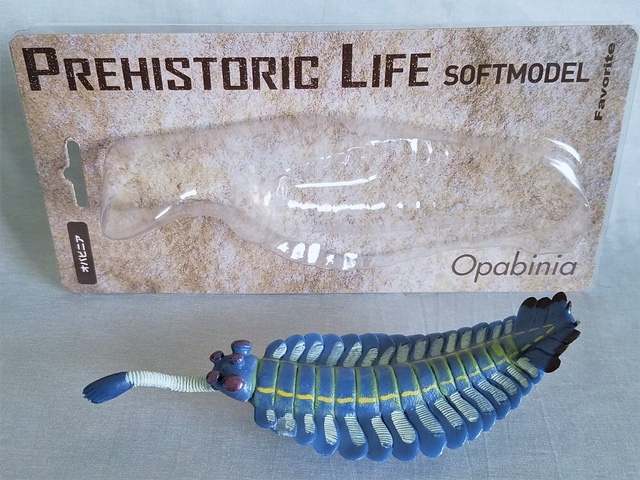
Favorite’s Opabinia comes packaged in the standard cardboard and plastic slipcase, which can be easily opened by removing the tape seals. The model measures just under 7 inches (18 cm) in length, which would be a little over 2:1 scale for the diminutive invertebrate. Unlike the Dinosaur line, which is primarily led by Kazunari Araki, the Prehistoric Life series is supervised by multiple artists between models. Opabinia was supervised by Hirokazu Tokugawa and Masanori Hirata. Favorite’s website, in both Japanese and English, has an interview with Tokugawa on the making of this model that provides more insight on the creative process. It is posed with its body bowed in the middle and a gentle lateral curve, suggesting the creature walking along a bumpy sea floor as it forages for an unknown food source. One can fiddle with the balance of the figure somewhat due to the rocking pose.
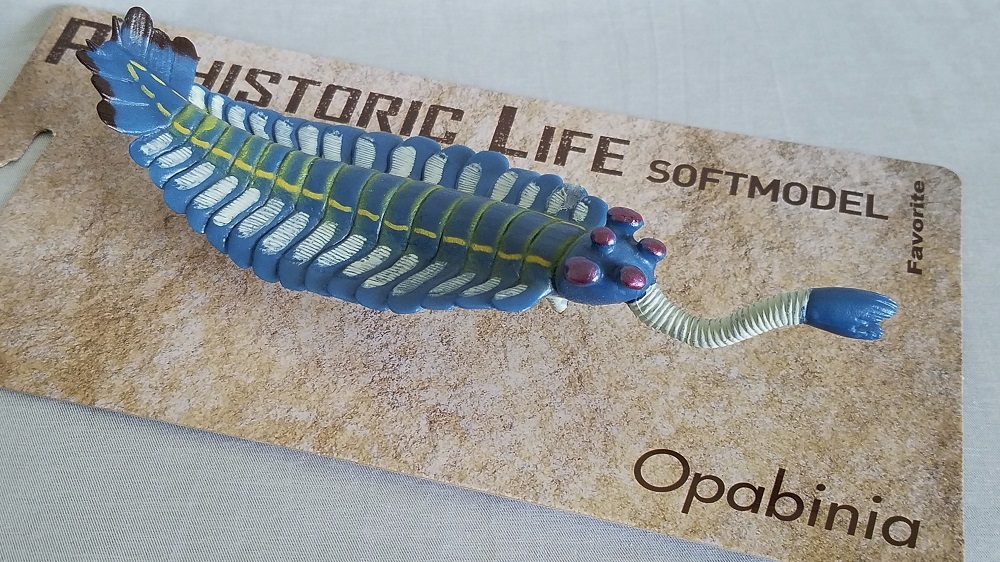
The Opabinia is reconstructed with ample attention to detail. All 15 body segments (not counting the head and tail) are present, with a corresponding pair of fin lobes extending from the sides (mine appears to have a factory-defect scuff on one of the forward left lobes). The striated proboscis and claw at the front of the head appear appropriately proportioned – although the claw is given a vertical arrangement, rather than the lateral one, which seems to be supported by the most recent studies. Opabinia had five spines extending from each half of the pincer; Favorite has been generous here and sculpted 8-10 grooved spines to each half. The creature’s minute mouth is sculpted into the underneath edge of the head, and the five eyes are present atop the head on short stalks, with the largest two situated on the back corners. Each body segment also bears a pair of short legs on the underside. Scientists disagree about what type of legs Opabinia had – if, indeed, the fossil features in question do actually represent legs – so there is room for creative license. Tokugawa cites the legs of a sowbug as his reference, but the final model bears legs which are stouter and fleshier in appearance, more akin to a caterpillar. Neither depiction is wrong at the time of this writing, but since Opabinia is thought to have been a soft-bodied animal, fleshy legs might be more appropriate. There is slight striation detail applied to the appendages, as well as two blunt “toes” per limb – again, very similar to a caterpillar.
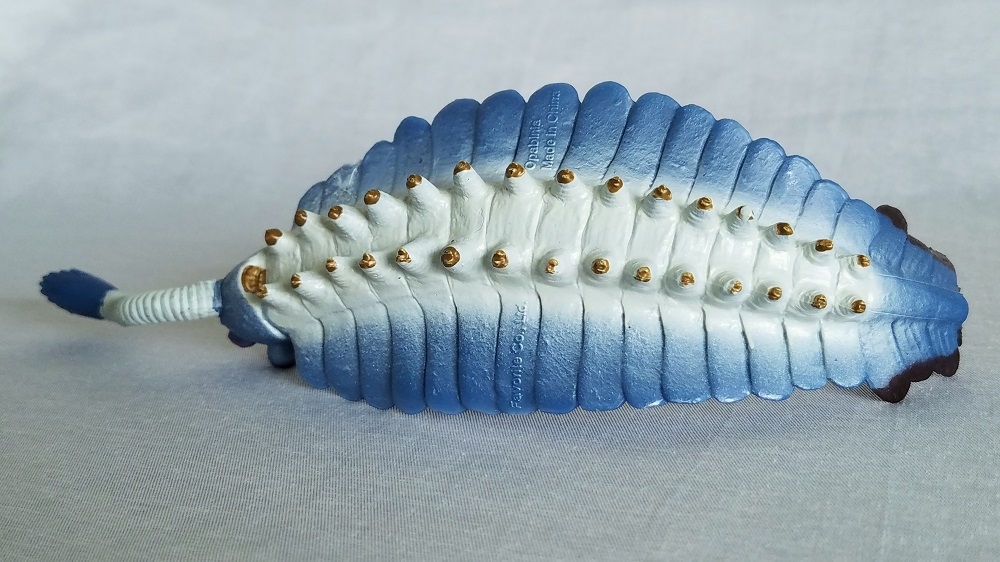
Another feature that is still a subject of debate is the folded sheet structure, or setal blades, located on each fin lobe, which have often been interpreted as gills or related structures. There have been several theories published about exactly how the setal blades attached to the lobes. The Soft Model, at a glance, has lobes and blades shaped like the interpretation from Zhang and Briggs, 2007, with the blades attached to the posterior curved edges of the lobes; however, the underside of the lobes are sculpted completely smooth, suggesting that the setae are actually resting on top of the lobes. Whether this is a deliberate design choice or just a result of cutting corners on the model, I don’t know, but Tokugawa does mention in the website’s interview that some details in the model combined elements from different reconstructions due to uncertainty. Paleoart is a tricky business sometimes! The model’s tail end features a single long conical segment, from which extend six veined fins and a couple of small, pointed appendages, completing the creature’s known anatomy.
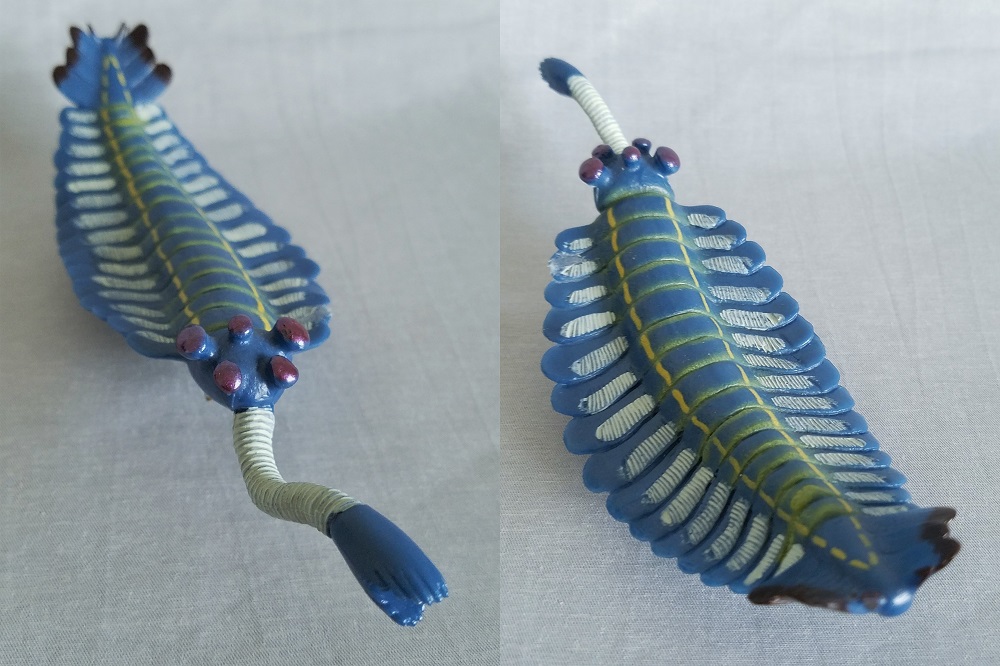
Opabinia is reconstructed rather colorfully here: the model is predominantly a saturated blue, with an off-white underbelly and highlights to the proboscis and setae. Additional green markings separate the body segments, and dotted yellow stripes run down the length of the body. The eyes are a lovely glossy purple. The mouth and “feet” are painted with dabs of bronze-brown, and the tail fins are tipped in black. Although there are a couple of sloppier-looking spots around the setae and body segments, overall the paint applications are done neatly. Tokugawa cites beetles and nudibranchs as references for the color scheme – the latter being an appropriate choice, given the (vague?) similarities in size and environment. Marine invertebrates have a precedent for coming in a plethora of color patterns, so it seems reasonable to speculate similarly bright colors for Opabinia in the absence of evidence otherwise.
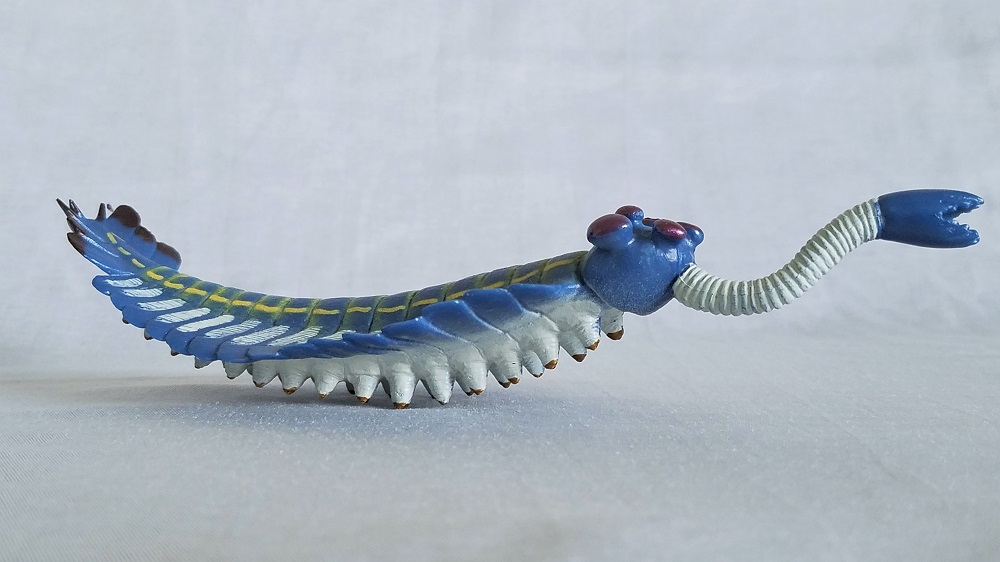
Tokugawa also notes that the blue scheme provides contrast with Favorite’s previous prehistoric invertebrate, Anomalocaris from the same time period, which boasted a pink/red color scheme. I find it neat to see an acknowledgment of color coordination between figures in a toy line, as it’s not an angle which is usually brought up.
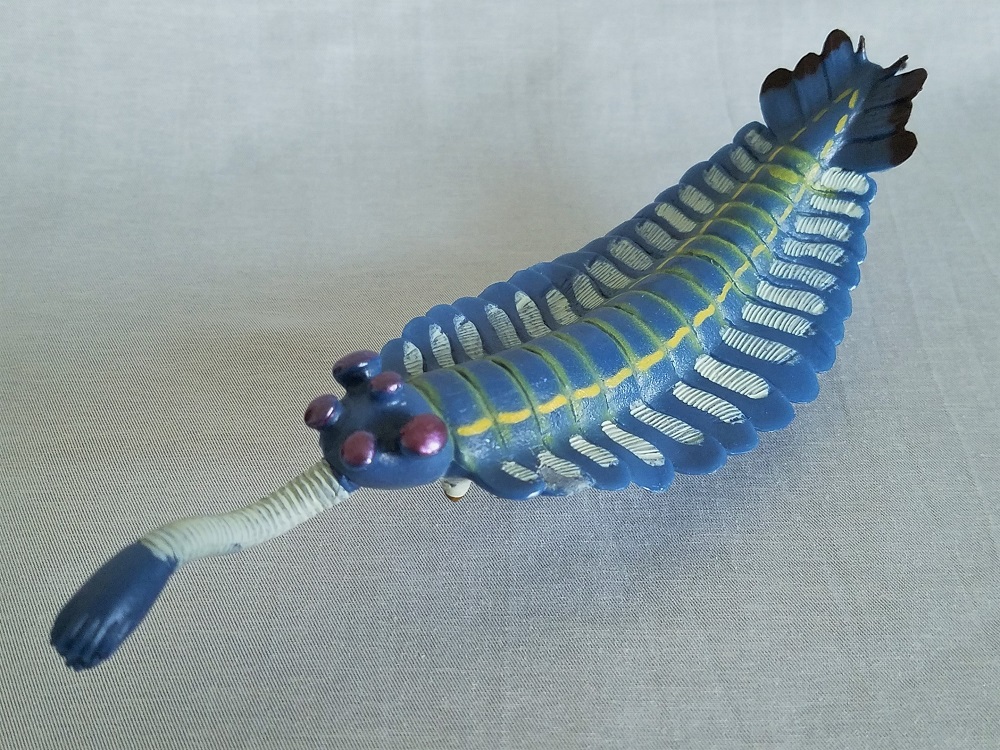
Favorite may not deliver much quantity for their Prehistoric Life series, but they do deliver in quality. Opabinia is a welcome inclusion to the Soft Model line, and Tokugawa’s team has done this alien-looking wonder justice, barring a few small ambiguous areas. There aren’t a lot of Western retailers stocking this figure currently, so if you want to avoid being scalped on eBay I recommend going through Amazon Japan – and this figure certainly comes recommended.

Disclaimer: links to Ebay and Amazon on the DinoToyBlog are affiliate links, so we make a small commission if you use them. Thanks for supporting us!




I’m glad someone finally reviewed this really cool model. Good job on the review. Let’s hope they make more in the future.
Their Prehistoric Life line is so great! I just wish they’d expand it a bit, as I don’t think they’ve added anything to it in about 5 years.
Favorite’s opabinia is a very little treated figure among prehistoric animals. Nice contribution from Favorite there is more anomalocaris life in relation to prehistoric Cambrian animals with an acceptable size.